5 Ways to Practice Crow Pose
This article originally appeared on Yoga Journal
I still remember the first time I experienced a teacher cueing students into Crow Pose. I looked around in amazement as almost everyone else held themselves, seemingly effortlessly, in the arm balance. Meanwhile, I nose-dived into the bolster in front of me. I thought to myself, "I'll never be able to do that pose!"
In Crow Pose, our elbows are bent, our knees are placed on our upper arms, and, as if that weren't sufficiently challenging, we lean forward and balance all our weight on our arms. The arm balance is terrific for building core and arm strength, focus, coordination, and confidence. It's also terrific at instilling fear in those of us who feel we don't have the strength or coordination to find ourselves in that position.
What I've learned since that class is there are so many creative ways to explore this asana. There are variations that allow you to explore the shape and actions of almost any pose while also being respectful of your needs, strength, injuries, confidence, and mood. Crow Pose, in particular, is an asana that anyone with wrist or shoulder sensitivity will want to vary, at least at the beginning. If you have a fear of falling, practicing Crow variations can help you build confidence and strength.
No variation of any asana is any better than the other variations. It's simply a matter of choosing the option that works best for your body in the moment.
5 Crow Pose variations
Video loading...
Before you attempt Kakasana, or Crow Pose, it helps to practice postures that require the same actions in the arms and core, such as Chaturanga Dandasana (Four-Limbed Staff Pose), Plank Pose, and Adho Mukha Svanasana (Downward-Facing Dog Pose). Virasana (Hero Pose) and Malasana (Squat or Garland Pose) will help you find the actions you need in your legs. This enables you to practice what is needed in Crow Pose while focusing on one area of the body at a time.
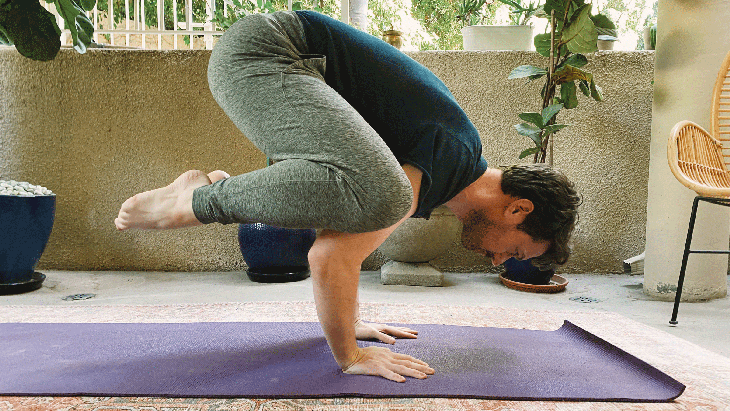
1. Traditional Crow Pose
Come into a squat, place your hands about shoulder-width apart on the mat about a foot in front of you. Rest your legs on your outer upper arms. Begin to shift your body weight forward as you start to slowly bend your elbows with a similar action as when you come into Chaturanga Dandasana. As your feet lift off the ground, pull your feet toward your seat. There is always the option to lift just one foot first, then lower it and lift the other foot, and finally try to lift both feet at the same time in Crow Pose.
From here, you can start to straighten your arms to come into Crane Pose, or Bakasana. (Crow and Crane-and their Sanskrit names Kakasana and Bakasana--are often mistakenly interchanged. Yoga Journal uses the term Bakasana for the version of this pose that is practiced with straight arms and knees tucked closer to your armpits.)
Beginner Tip: One of the tricks here is to think of leaning up and over instead of just forward. Place a yoga bolster in front of you and visualize maneuvering your body up and over it to help you find the desired shape and action. (The bolster also softens any crash landings that inevitably happen!)
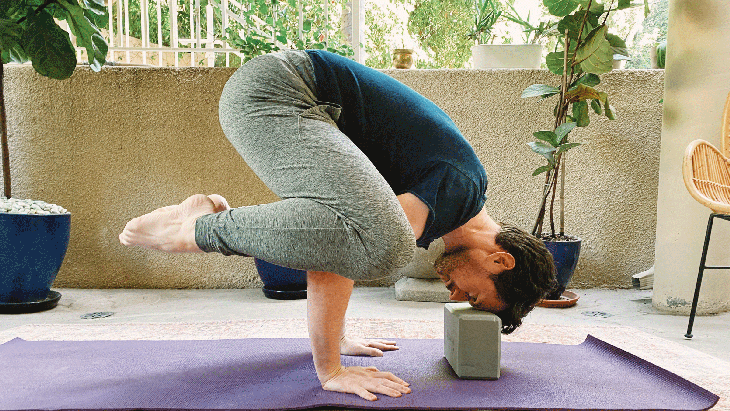
2. Crow Pose with a block beneath your forehead
Place a foam block a couple of feet in front of you and lean forward to rest your forehead on it before you lift your feet. This can make it much easier to find your balance because you have two places of contact with the ground-your feet and your head. Start with the block in the tallest position and, if you need, move it lower.
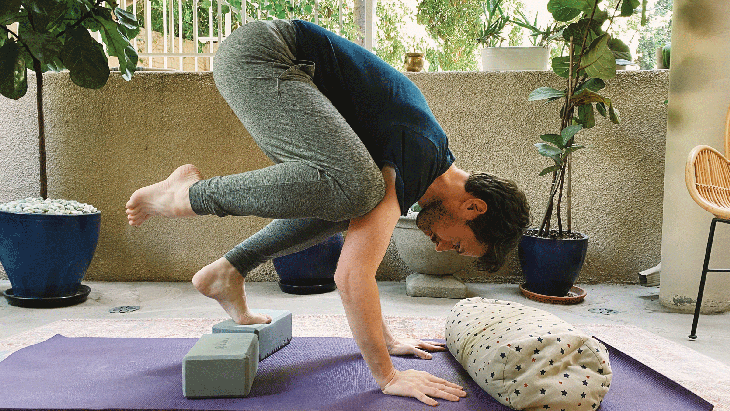
3. Crow Pose with blocks beneath your feet
Start by squatting with a foam block on the lowest position under each foot. This helps you get your knees a little further up your arms, which helps with stability. It also shifts your body weight a little more forward, so you begin to feel yourself move into the shape of the pose before you lift your feet. This allows you to start to feel the actions required to hold you in the position. From here, you can slowly lift one foot at a time or both feet together. Again, a bolster or cushion placed in front of you can act as a cushion if you topple forward.
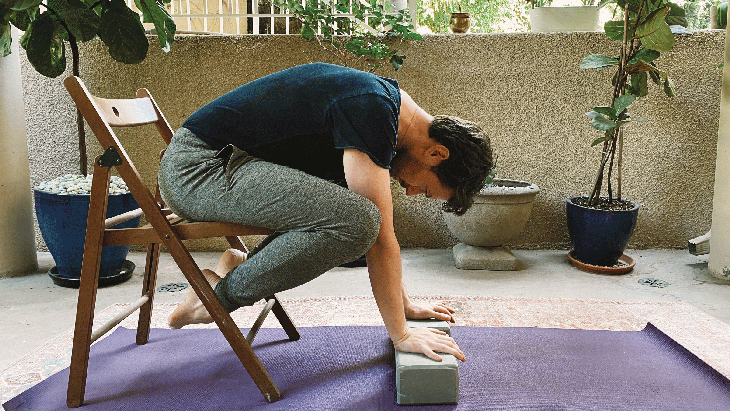
4. Chair Crow Pose
Try taking flight in a chair! Sit toward the front edge of a chair and place two foam blocks about a foot in front of you. Lean forward, place your hands on the blocks, and press your arms against your inner knees. Lift your feet and move them back underneath the chair, pointing your feet and bringing your big toes to touch. You have the option to play with the height of the blocks, starting with the tallest position and moving to the shortest. You can press into the blocks as if you are trying to lift yourself off the chair.
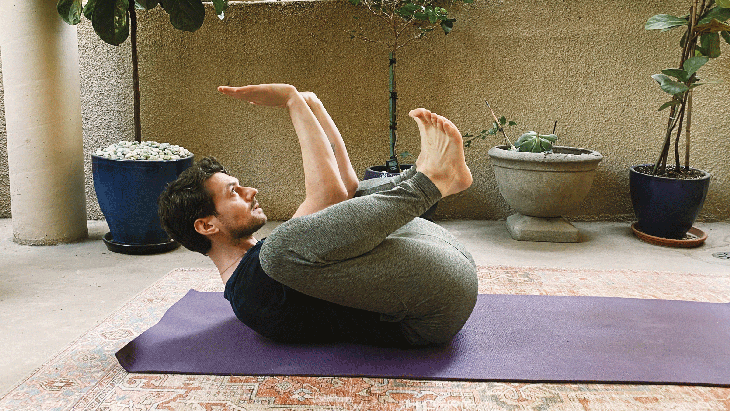
5. Reclining Crow Pose
Practicing Crow Pose on your back is a wonderful way to experience the same shape and some of the muscle engagement without placing pressure on the wrists and shoulders or having to worry about balancing. Come onto your back, bend your knees, and hug them toward the sides of your waist. Reach your arms straight in front of you. Press your upper arms against your inner knees and hug your knees back into your arms. You can even place a foam block on the palm of each hand and imagine that you are pushing these up toward the ceiling.
See also: So You Know Crow Pose? Here are 3 Ways to Make it Even More Challenging
About our contributor
Andrew McGonigle has studied anatomy for more than 20 years. After initially studying to become a doctor, he moved away from Western medicine to become a yoga and anatomy teacher. He shares his knowledge of the body and the ways it moves in yoga teacher training courses throughout the world and leads his own Yoga Anatomy Online Course. His second book, The Physiology of Yoga, was published in June 2022. To learn more about Andrew, check out doctor-yogi.com or follow him on Instagram @doctoryogi.
For exclusive access to all of our fitness, gear, adventure, and travel stories, plus discounts on trips, events, and gear, sign up for Outside+ today.

